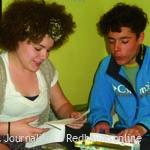Junior Brady Ryan examines the value of his possessions by tossing most of them out
by Brigid Kelly
Talon Staff Writer
100 things. That’s it. Nothing more. Could you do it? Junior Brady Ryan is trying. Over the past year, the “100 Thing Challenge” has gone viral because of a simple blog post by a man from San Diego, California. The project, launched by blogger Dave Bruno, started as a one-year experiment with a purpose: to break free of consumerism by bringing his possessions down to 100 items. What began as a 365 day challenge soon became a lifestyle for Bruno and many others who were inspired by his words.
“I read an article in the Star Tribune about a family who was reducing their possessions,” said junior Brady Ryan. “They referenced [Dave Bruno’s] blog, I checked it out, and decided to try my own version of the challenge.”
It was around the Christmas of 2010 when Ryan initiated his personal experiment. He decided he would aim for 200 possessions by the end of the school year.
“One of the hard parts is that [Dave Bruno] lives in San Diego, California,” explained Ryan. “I’m an outdoorsy Minnesotan who lives between two houses. That’s why I’ve decided to aim for 200 items rather than 100.”
Practicality plays a significant role in Ryan’s goals, but it doesn’t overwhelm the purpose of the project.
“I want to push myself toward less and less possessions, but I also want to be practical,” explained Ryan. “Owning three pairs of un
derwear is gross. At the same time, I want to push myself toward becoming independent of my possessions.”
Ryan’s process of “thing” elimination has been accompanied by numerous smaller decisions, like what to do with the items he’s eliminating.
“I’m trying to give things away in a constructive manner,” said Ryan. “I’ll give things like clothes to Goodwill or my brother. It can be hard, you have to decide what you’re willing to get rid of forever.”
Getting rid of something forever is a daunting thought, but it also places value on the things that are truly important.
“I was surprised by what I was attached to,” admitted Ryan. “I found this stuffed animal that I haven’t seen in over five years and I still haven’t been able to get rid of it.”
Items hold a surprising level of sentimental value, as Ryan found out the hard way. Ryan, however, has made this task into something more than a massive clean-up.
“I’m trying to simplify things,” said Ryan of his goal. “This challenge will make whatever I do have more valuable to me, redirect my focus to only what is important, enrich relationships and [allow me to] resist consumerism.”
All of this from what seems to be the simple task of de-cluttering? Believe it, there’s more to it once you dig below the surface.
“Anyone who has studied philosophy would be drawn to a project like this,” said philosophy and economics teacher David Hoffner. “You begin to recognize how shallow and empty base materialism really is.”
Materialism: a theory that physical matter is the only or fundamental reality and that all being and processes and phenomena can be explained as manifestations or results of matter. Consumerism: a preoccupation with and an inclination toward the buying of consumer goods. (Definitions from Webster’s Dictionary).
Both words are common and recognizable, but rarely defined. Materialism is the direct result of American consumerism – a trap that almost everyone seems to fall prey to eventually. Whether it’s purchasing the newest fashion trend, video game, appliance, or car – people of all ages have, at some point, surrendered to the pressures of consumerism.
“I try to diplomatically call students out [on materialistic sights],” said Hoffner. “A materialistic mind-set can be really pernicious and ugly; and I do sense it at times here at Minnehaha.”
That’s not to say, however, that purchasing a new item is always bad or that you’re less of a person if you do buy something.
“I have absolutely no problem with buying things you can afford,” said Hoffner, “but I’m in favor of everyone buying less and buying better.”
That being said, through this project, Ryan is challenging himself by not only avoiding the pressures of consumerism and materialism, but he’s also striving to make his life more meaningful.
“It’s easy to become bogged down by the things you own,” said Ryan. “If I’m less dependent on objects then my relationships with other people will become stronger.”
Hoffner agreed.
“Relationships would be strengthened through the conversation that would result [from the challenge],” explained Hoffner. “The benefits would be found in the debates with friends and family about what they spend their money on and why.”
Ryan’s friends aren’t surprised that he has taken on a project like this.
“It’s typical Brady,” said junior Madeline Myers. “Brady loves challenging himself. This totally reflects the ambitious part of his personality, and it does so in a creative and humbling way.”
Ryan’s sister, sophomore Madison Ryan, agrees with Myers.
“I am most definitely not surprised that Brady took on this challenge,” said Madison Ryan. “This is right up his ally.”
Ryan has also acted as a source of inspiration for his younger sibling.
“I would love to try something like this,” explained Madison Ryan. “[His project] makes me think, ‘can I live without these things?'”
However, it’s important to keep the spirit of the project in mind. Becoming too focused on the exact number of material things would defeat the purpose of eliminating the sense of materialism.
“My concern with doing a project like this,” said Hoffner, “would be the legalism and guilt that could possibly set in, rather than the heart of the project,” said Hoffner.
Warnings aside, Ryan has taken on a unique and ambitious challenge that many Americans could use a taste of.
100 things. Turns out it’s possible. Turns out the positive implications are endless. What’s really important to you?

